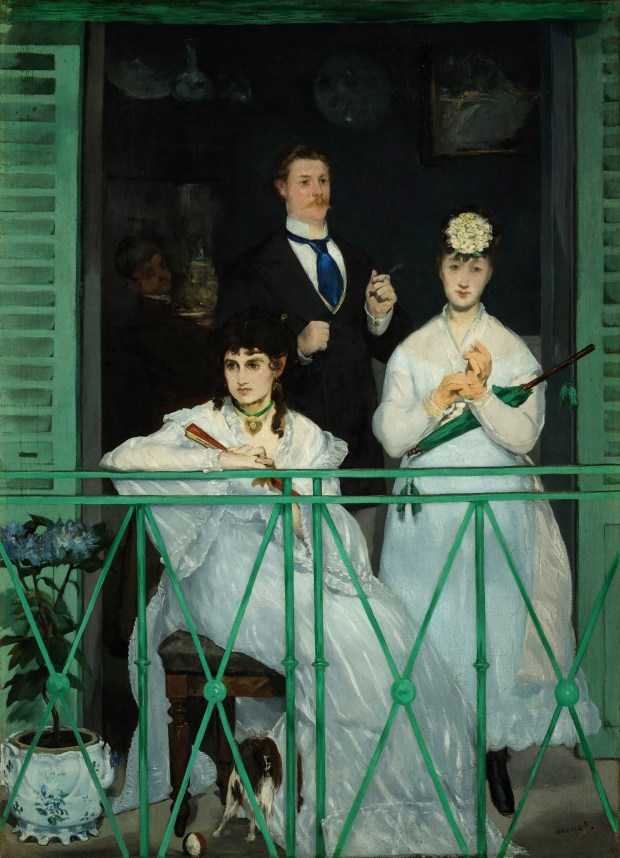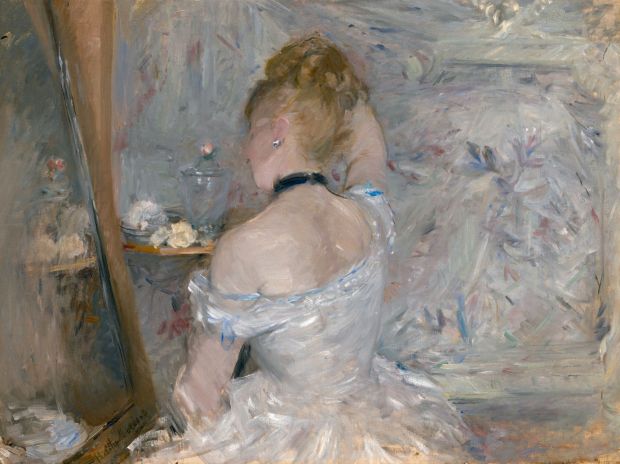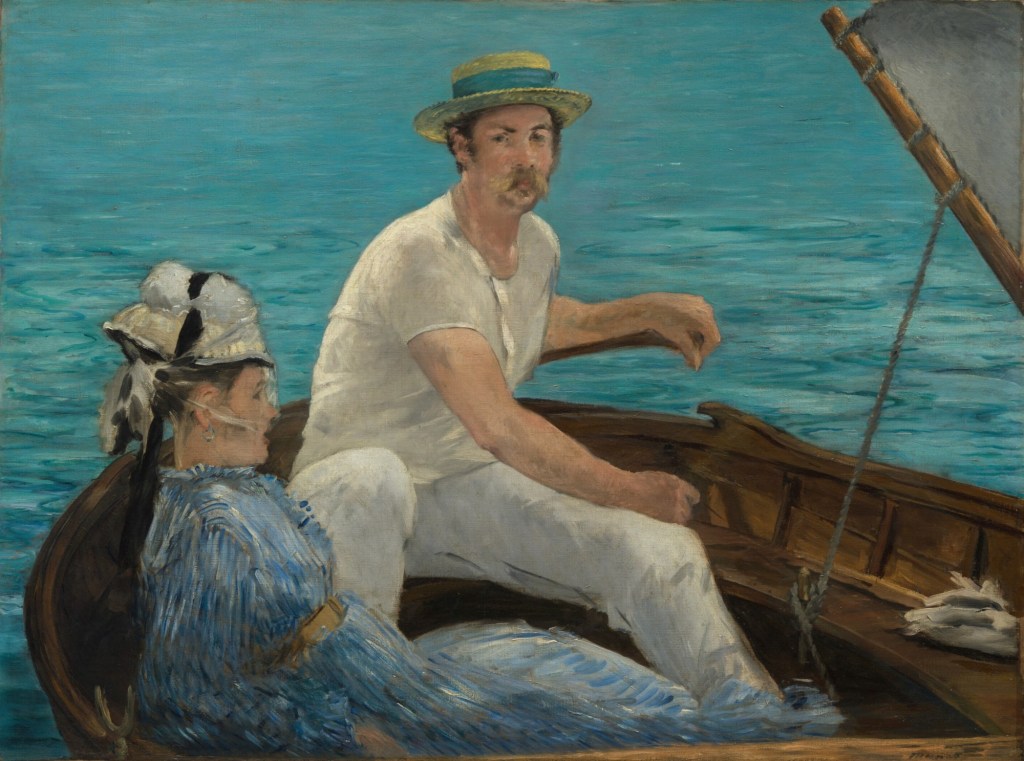Twenty years ago, Berkeley author Jeffrey Meyers published “Impressionist Quartet,” an interlocking biography exploring the “intimate genius” of painters Edouard Manet and Berthe Morisot, and Edgar Degas and Mary Cassatt.
Last fall, San Francisco’s Legion of Honor museum presented a splendid retrospective of Cassatt’s work, touching on Degas’ influence on the American artist making her name in Paris.
This fall, the Legion follows up, and doubles up, with “Manet & Morisot,” detailing the extensive artistic exchange between the two of them from the 1860s to the 1880s at a turning point in European painting.
The exhibit, on view through March 1, takes a canny approach as it renews attention to Morisot’s career, stature and influence. Pairing her paintings — more than half of the 45 works on display — with Manet’s is not only logical but revealing. The museum calls it a “conversation” between the two.
According to exhibit curator Emily A. Beeny, this is the first major exhibition dedicated to Manet and Morisot together. “This may come as a surprise,” she says in a catalog essay, “since theirs was the closest relationship between any two members of the Impressionist circle.”
They were friends and colleagues, painter and model and, eventually, family, after Morisot married Manet’s brother, Eugene.
The Legion of Honor exhibit makes a case for a shift in the expected relationship between a famous male artist and a lesser-known female. Exhibit texts argue that Morisot influenced Manet as much if not more than he influenced her.
This reversal helps explain Manet’s evolving style. Meyers’ book quoted French philosopher Georges Bataille: “Had it not been for Berthe Morisot, in whom he discovered the double enchantment of a painter’s talents and a model’s beauty, he might never have tried his hand at Impressionist painting.”
The exhibit includes plenty of compare-and-contrast examples of Manet and Morisot’s work, but it is more than a scholarly examination. Museum visitors may be thrilled just to stroll among dozens of Impressionist paintings, and many of Morisot’s are true discoveries that haven’t been reproduced on countless postcards and calendars.
 Édouard Manet’s 1868-’69 painting “The Balcony” depicts, among others, fellow artist Berthe Morisot (seated, at left). (Fine Arts Museums of San Francisco)
Édouard Manet’s 1868-’69 painting “The Balcony” depicts, among others, fellow artist Berthe Morisot (seated, at left). (Fine Arts Museums of San Francisco)
Yet the most famous picture on display is “The Balcony” (1868-69), Manet’s mysterious, nearly 6-foot-tall painting that included Morisot’s image for the first of many times. And it’s not “impressionistic” at all.
Most exhibits of the Impressionist circle focus on a single painter (“Monet and Venice,” for example, opens next March at the de Young Museum.) “Manet & Morisot,” obviously, is a chance to see more than one artist’s work on the gallery walls — and learn more about a painter like Morisot, underappreciated for decades.
Berthe Morisot (1841-1895) was actually a founder of French Impressionism. She was born in Bourges, in central France, the third of a government official’s four children. The family resettled in 1852 to Paris, where Berthe and two sisters began drawing lessons.
Berthe and her sister Edma continued more advanced studies, copying old master paintings at the Louvre Museum, where in 1867 Berthe met Manet. Since both Morisot and Manet families were respectably upper-middle class, there was no problem in her sitting as a model for him.
 Berthe Morisot’s “Woman at Her Toilette,” was one of a series of paintings she created depicting women dressing, combing their hair, and the like. (Fine Arts Museums of San Francisco)
Berthe Morisot’s “Woman at Her Toilette,” was one of a series of paintings she created depicting women dressing, combing their hair, and the like. (Fine Arts Museums of San Francisco)
She soon formed part of his astonishing art circle, which included Degas, Cezanne, Sisley, Monet and Renoir. Distinctively her own artist, she had nine paintings in the first Impressionist exhibit in 1874. (One of them, the placid out-of-doors “Reading,” is a highlight of the Legion exhibit.)
Beeny, the exhibit curator, points out that in the 1880s, Morisot “unveiled a new body of work characterized by broad, open strokes: ribbons of pale color that dissolved form into touch.” One contemporary critic said her pictures were “ready to vanish like a wisp of smoke.”
In the Legion’s exhibit of paired paintings, Morisot’s technique can be subtly distinctive. Manet’s “Before the Mirror” (1877) and her “Woman at Her Toilette” (1875-1880) both show a bare-shouldered woman, perhaps dressing or undressing. Morisot’s model seems to merge with the background in a scene the curator describes as “poetic indeterminacy.”
Scenes of Paris, painted from the same viewpoint, offer more contrast. Manet’s “View of the Exposition Universelle” (1867) is crowded with figures that look almost pasted to the surface. Her “View of Paris from the Trocadero” (1871-72) seems to be scrubbed clean except for a few observers.
Both artists are represented by landscapes, seascapes, portraits and family groupings. The exhibit’s first gallery is heavy with Manet’s dramatic portraits of Morisot. One, “Berthe Morisot with a Bouquet of Violets” (1872) is described by the curator as “transfixing,” in contrast to the benign title.
Morisot’s 1885 self portrait, the final image in the exhibit, has the same intensity. The curator describes her as being in “vigorous midlife, her hair dusted with gray, her expression resolute.” Morisot showed the picture at an exhibition in 1893.
By the time of her death in 1895 she had rolled up the canvas and stored it in a cupboard. The exhibit text, often asking questions about these artists’ attitudes, asks one more about Morisot: “What did it mean for an artist still best known for appearing in another’s work to paint her own likeness?”
‘MANET & MORISOT’
Through: March 1
Where: Legion of Honor in Lincoln Park, 34th Avenue and Clement Street, San Francisco.
Hours: 9:30 a.m. to 5:15 p.m. Tuesday through Sunday
Admission: $20-$35; famsf.org
Originally Published: October 20, 2025 at 3:53 PM PDT

